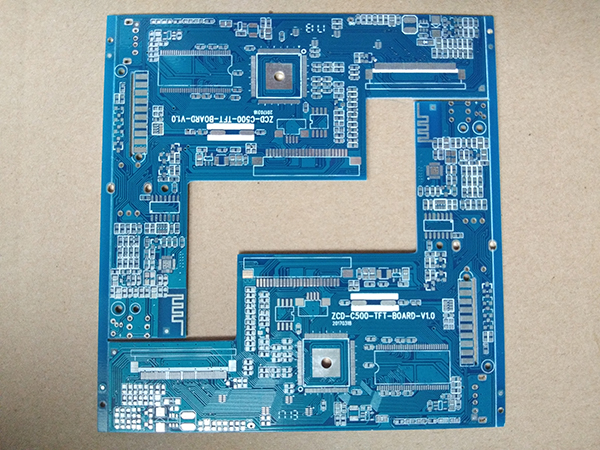What is the reason for the low viscosity of solder paste on PCB
The so-called low viscosity phenomenon of solder paste refers to the phenomenon that parts can not be adhered to by solder paste during or after the work. Perhaps the reasons for the low viscosity include: lack of solder paste coating, lack of flux viscosity, inappropriate metal content, rough particle size, rapid movement of PCB during the process, unsatisfactory support of PCB during the process, humidity effect, etc.
If the printing quantity of solder paste circuit board is insufficient, solder paste can not hold on to the parts on the circuit board can be understood. Solder flux is the decisive factor of solder paste adhesion, low viscosity solder flux will naturally produce low viscosity solder paste. Because tin powder itself can not provide viscous, excessive powder adherence to viscous is gloomy. However, the relationship between metal content and viscosity is quite complex. With the increase of metal content, the viscosity decreases rapidly at the beginning, and then slows down gradually. The decreasing trend may be related to the thickness of the sample.
Generally speaking, the less the powder content, the more solder paste will be squeezed during the viscous test period, the smaller the gap between the test probe and the substrate, the smaller the gap is conducive to adhere to the integrity of printing and avoid leakage. When the metal content exceeds about 40%, according to the test experience value of a certain solder paste, the viscosity will decrease after slightly adding the metal content.

The addition of viscosity should be due to the cohesion enhancement effect of fillers. When the metal content exceeds a certain critical value, the viscosity will continue to decline, which is due to the inadequate coating and adhesion of flux to tin powder, and the inadequate adhesion will gradually be added. Viscosity is proportional to the adhesion and cohesion of solder paste, and the adhesion is distributed by a single element of flux. Cohesion is added as the size of the powder decreases, which is due to the addition of solder paste viscosity, resulting in the addition of viscosity.
The firmness of a piece is determined not only by the viscosity of the solder paste, but also by the complex problems touched by the piece-making equipment. As far as a piece-making equipment is concerned, some kind of solder paste is in good condition, but unfortunately, if the equipment is changed, the problem will occur. One of the important factors affecting the persistence of parts is the movement of circuit boards. If the circuit board moves fast during the process, the inertia of the part may exceed the viscous force of the solder paste, which will cause the part to slip off obliquely.
Another factor is the stability of the circuit board itself when it is working. If the circuit board is not supported and fixed outstanding, when it is bumped by the placement arm, the circuit board will have a greater shake, so there will be the problem of dropping parts. Appropriate process planning should include reasonable support mechanisms and solid fixtures for clamping circuit boards.
Viscosity is an important characteristic function of flux. Some flux can absorb moisture rapidly. Humidity will inevitably affect the viscous performance of solder paste. High humidity may cause sclerosis, thinning of solder paste and decrease of viscosity, which should be prevented.
When the solder paste has just been exposed to air, there will be an appropriate or higher viscosity. However, the stickiness of printed circuit boards decreases rapidly with time, which makes the scale of PCB processing very narrow.
Perhaps the reasons for the short viscous time include: too high metal content, too high volatility of solvents, too large size of powder particles, the appearance of solder paste after printing begins to harden, large air activity in operating environment, inappropriate humidity, high ambient temperature, too thin steel plate and so on.
The problem of metal content has been repeatedly commented on. The moment of sticking to the stickiness will be shortened with the increase of metal content. It is obvious that if the flux content is added, the solder paste will be added at the time of stickiness, which can also be explained as the effect of solvent content. This will enable us to understand many circuit board manufacturers or literature Chen said that there are reasons for insisting that the solder paste metal content should not exceed about 90%.
The addition of powder surface area will help the solvent to keep for a longer time, which is due to the enhanced surface adsorption between the powder and the solvent. However, if the particle size is small, the chemical reaction between flux and powder will increase and speed up, and it may also occur as a result of skin crust and reduce the viscosity of the moment.
The article originated from Jiangmen single-sided and double-sided circuit boards. http://www.yonghongpcb.com
-
07-18
What is the structure of blind buried hole circuit board?
Blind buried-hole circuit boards have the characteristics of free zigzag, folding and winding, free movement and expansion in three-dimensional space, good heat dissipation performance and high precis
-
07-18
What role does copper play in circuit boards?
PCB manufacturers take you to know that there are several reasons for PCB copper laying: 1. EMC can shield large area of ground or power supply copper, and some special areas, such as PGND, play a pr
-
07-18
Four matters needing attention in choosing PCB manufacturer
When choosing PCB manufacturers, the price of PCB manufactured by professional manufacturers will be more affordable, and the quality assurance will be stronger, which will be more guaranteed after
-
07-18
How to use three glue-proof PCB correctly?
Sanfang gum does not contain evaporative substances such as acetone and xylene, which is more environmentally friendly and safe. Mainly used in electronic circuits and components to form a protectiv